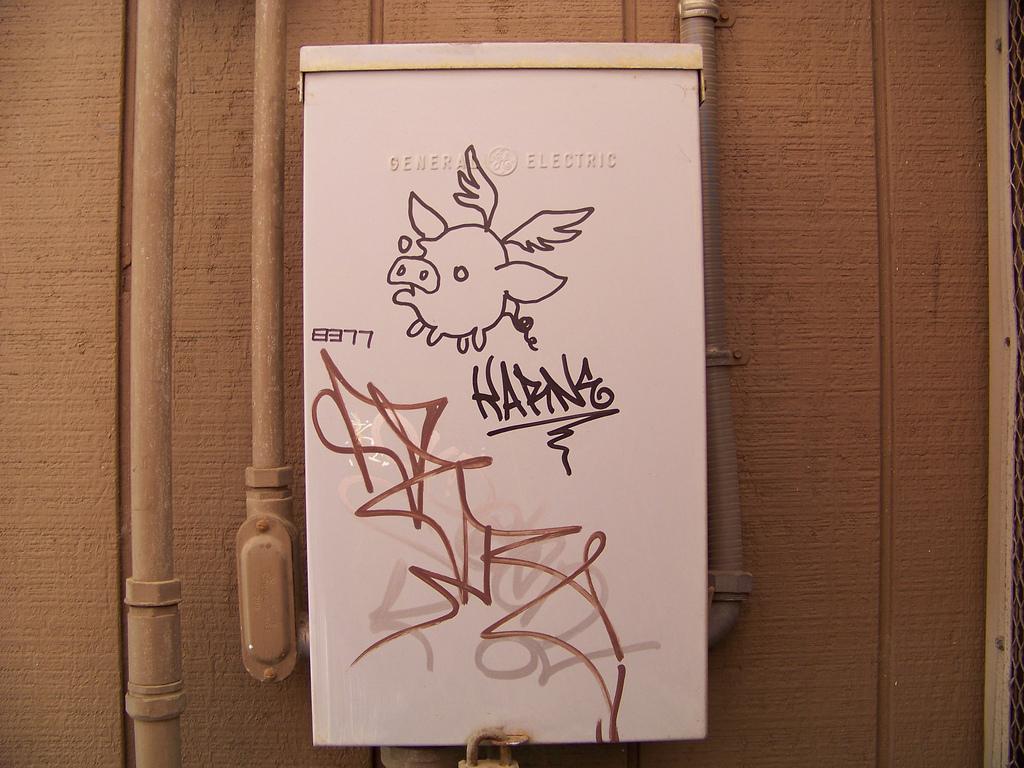Scrawled names like “Oats” or “Karne,” or even, “Jewels,” seem light-hearted, even innocuous. But they can be a warning of gang activity and require hours of scrubbing to remove from public property.
An Inquirer reporter and a former member of the Norteño street gang recently toured the DVC campus and found more than 90 separate incidents of graffiti not yet erased by the buildings and grounds department.
Prime pieces of real estate for such “tagging” included trashcans, tables, benches and utility boxes, particularly outside the Math building, the Library and the incline that leads to the buildings atop “Cardiac Hill.”
DVC’s official crime reports reveal few such incidents, but that is because most go unreported to campus police, said Lt. Tom Sharp of district police services.
“We can’t take action based on rumor or innuendo,” Sharp said. “We have to operate under the law.”
In many cases, tags seen on the Inquirer’s campus tour appeared to be sketched over previously drawn tags.
Such graffiti can be a sign of turf competition, said Detective Bradley Giacobazzi of the Concord Police Department’s Major Crimes Unit. The MCU is charged with investigating gang activity.
Giacobazzi said it would not be surprising if tags seen around Concord spilled over into Pleasant Hill, given that DVC draws students from around the East Bay.
Sharp acknowledged that some of the tags could be gang-affiliated, but he and Giacobazzi speculated they are likely the work of non-violent graffiti artists and also “wannabes.”
“Wannabes,” Sharp explained, are people who aren’t necessarily members of a gang, but tag public surfaces with gang markings to pretend they belong.
One tag, found on a window outside the Faculty Office Annex building, clearly revealed the words, “Antes STM.” Giacobazzi said it is the name of a popular Bay Area tagging “crew” that has a website and whose work also shows up in Concord.
The former gang member, who would not allow his name to be printed for fear of retribution, confirmed that an “X4” tag seen on a bench outside the Math building is one used by the Norteño street gang. An “X3” tag, found crossed-out on the same bench, means the Norteños took the bench from the Sureños, he said.
Norteños and Sureños are prominent and rival street gangs in the Bay Area, Giacobazzi said.
The Sureños started in the Los Angeles area, and the Norteños started in Northern California, according to knowgangs.com.
Another tag, this one on an electrical utility box outside the Physical Sciences building, says, “E$O,” which could be a tag for either the East Side Oakland or East Side Oakley gangs, Giacobazzi said.
But the detective emphasized the activity is “hit-or-miss,” and likely that of tagging crews and wannabes.
Maintenance assistant Andre Nash, DVC’s sole graffiti-remover, said he spends 10 hours per week removing the tags.
A maintenance assistant makes around $3,255 per month, according to the district’s salary schedules. That translates to about $20.34 an hour, or about $203.44 spent in labor each week to re-claim the campus.
Nash said the cost for equipment is different each time, since the method for applying the graffiti varies. Sometimes it’s as simple as using a $4 can of “Goof-Off,” and sometimes he must paint over deep scratches or even replace surfaces altogether.
“It’s a lack of school pride,” Nash said of those who leave their mark.
Nash’s pride is unquestioned: He regularly removes graffiti without waiting for a work order.
Bill Oye, dean of student life, said a student found to be vandalizing school property, “can be assigned a variety of consequences; including a warning, restitution, educational projects or assignments, community services, disciplinary probation, loss of privileges or suspension from the college.”
But such situations are rare.
Oye said he can remember only “two or three instances where the person doing the graffiti was ‘caught in the act’.”
Campus police services urges students to report incidents of graffiti immediately, especially if taggings are racially or hate-motivated.
Contact Christopher C. Long at [email protected]





































































